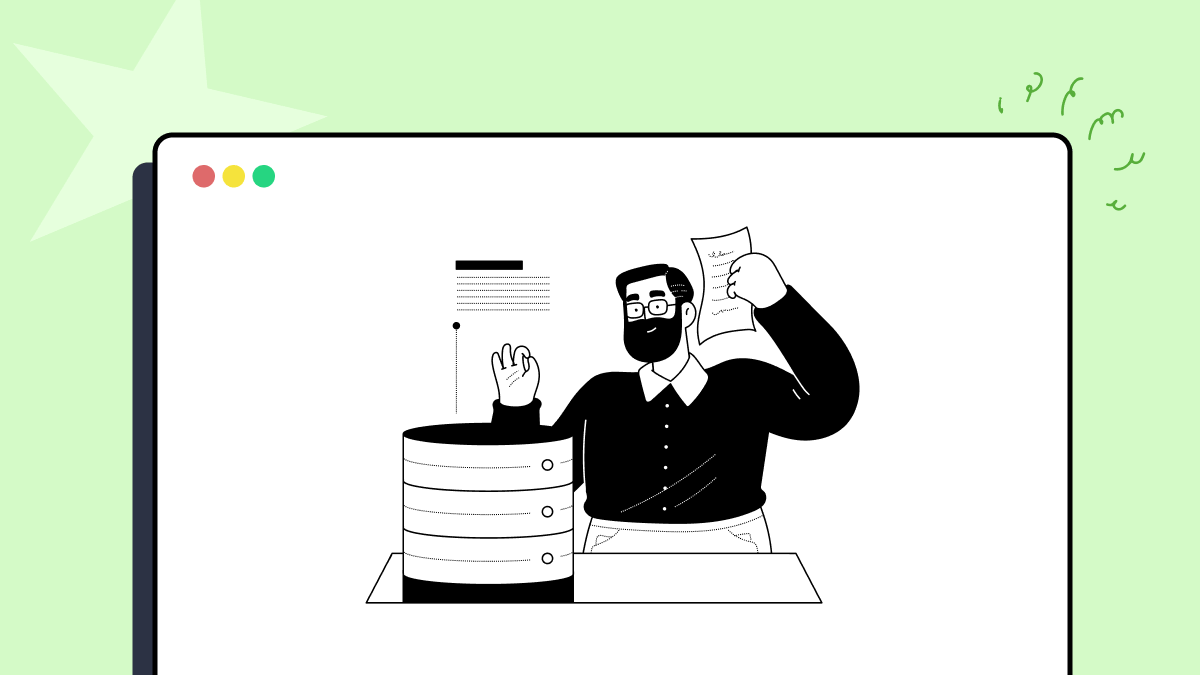How to use shouldCallPageSource method of org.fluentlenium.adapter.testng.ControlUnitTest class
Best FluentLenium code snippet using org.fluentlenium.adapter.testng.ControlUnitTest.shouldCallPageSource
Source: ControlUnitTest.java
...416 control.url();417 verify(fluentControl, times(1)).url();418 }419 @Test420 public void shouldCallPageSource() {421 control.pageSource();422 verify(fluentControl, times(1)).pageSource();423 }424 @Test425 public void shouldCallPerformanceTiming() {426 control.performanceTiming();427 verify(fluentControl, times(1)).performanceTiming();428 }429 @Test430 public void shouldCallEvents() {431 control.events();432 verify(fluentControl, times(1)).events();433 }434 @Test...shouldCallPageSource
Using AI Code Generation
1import org.fluentlenium.adapter.testng.ControlUnitTest;2import org.fluentlenium.core.FluentControl;3import org.fluentlenium.core.FluentPage;4import org.fluentlenium.core.annotation.Page;5import org.openqa.selenium.WebDriver;6import org.testng.annotations.Test;7public class MyTest extends ControlUnitTest {8 private MyPage page;9 public void test() {10 goTo(page);11 page.shouldCallPageSource();12 }13 public static class MyPage extends FluentPage {14 public void isAt() {15 }16 public String getUrl() {17 }18 public String getPageSource() {19 return "my custom page source";20 }21 public void shouldCallPageSource() {22 FluentControl control = getFluentControl();23 control.pageSource();24 }25 }26}shouldCallPageSource
Using AI Code Generation
1package org.fluentlenium.adapter.testng;2import org.fluentlenium.adapter.FluentTestNg;3import org.fluentlenium.adapter.SharedMutator;4import org.fluentlenium.core.FluentPage;5import org.fluentlenium.core.annotation.Page;6import org.fluentlenium.core.domain.FluentWebElement;7import org.fluentlenium.core.hook.wait.Wait;8import org.openqa.selenium.support.FindBy;9import org.testng.annotations.Test;10import static org.assertj.core.api.Assertions.assertThat;11public class ControlUnitTest extends FluentTestNg {12 private PageA pageA;13 private PageB pageB;14 public void testPageSource() {15 goTo(pageA);16 assertThat(pageA.isAt()).isTrue();17 assertThat(shouldCallPageSource()).isTrue();18 assertThat(pageA.isAt()).isTrue();19 assertThat(shouldCallPageSource()).isFalse();20 assertThat(pageA.isAt()).isTrue();21 assertThat(shouldCallPageSource()).isFalse();22 assertThat(pageA.isAt()).isTrue();23 assertThat(shouldCallPageSource()).isFalse();24 goTo(pageB);25 assertThat(pageB.isAt()).isTrue();26 assertThat(shouldCallPageSource()).isTrue();27 assertThat(pageB.isAt()).isTrue();28 assertThat(shouldCallPageSource()).isFalse();29 assertThat(pageB.isAt()).isTrue();30 assertThat(shouldCallPageSource()).isFalse();31 assertThat(pageB.isAt()).isTrue();32 assertThat(shouldCallPageSource()).isFalse();33 }34 public static class PageA extends FluentPage {35 @FindBy(tagName = "h1")36 private FluentWebElement h1;37 public String getUrl() {38 }39 public void isAt() {40 assertThat(h1.text()).isEqualTo("FluentLenium");41 }42 }43 public static class PageB extends FluentPage {44 @FindBy(tagName = "h1")45 private FluentWebElement h1;46 public String getUrl() {47 }48 public void isAt() {49 assertThat(h1.text()).isEqualTo("FluentLenium");50 }51 }52}shouldCallPageSource
Using AI Code Generation
1import org.fluentlenium.adapter.testng.ControlUnitTest;2import org.testng.annotations.Test;3public class FluentTest extends ControlUnitTest {4 public void test() {5 shouldCallPageSource();6 }7}8import org.fluentlenium.adapter.junit.ControlUnitAdapter;9import org.junit.Test;10public class FluentTest extends ControlUnitAdapter {11 public void test() {12 shouldCallPageSource();13 }14}15import org.fluentlenium.adapter.spock.FluentPage16import org.junit.Test17class FluentTest extends FluentPage {18 def "test"() {19 shouldCallPageSource()20 }21}shouldCallPageSource
Using AI Code Generation
1public class ControlUnitTest extends FluentTestNg {2 public String getWebDriver() {3 return "htmlunit";4 }5 public void shouldCallPageSource() {6 ControlUnitTest controlUnitTest = new ControlUnitTest();7 controlUnitTest.initFluent(new FluentControl() {8 public String pageSource() {9 return "test";10 }11 public void quit() {12 }13 public void get(String s) {14 }15 public void goTo(String s) {16 }17 public void goTo(URL url) {18 }19 public void goTo(Class<?> aClass) {20 }21 public void goTo(Object o) {22 }23 public void back() {24 }25 public void forward() {26 }27 public void refresh() {28 }29 public void screenshot(String s) {30 }31 public void screenshot(String s, int i, int i1, int i2, int i3) {32 }33 public void screenshot(File file) {34 }35 public void screenshot(File file, int i, int i1, int i2, int i3) {36 }37 public void screenshot(OutputStream outputStream) {38 }39 public void screenshot(OutputStream outputStream, int i, int i1, int i2, int i3) {40 }41 public void screenshotAs(OutputType<File> outputType, File file) {42 }43 public <X> X screenshotAs(OutputType<X> outputType) {44 return null;45 }46 public void savePageSource(File file) {47 }48 public void savePageSource(OutputStream outputStream) {49 }50 public String savePageSource() {51 return null;52 }53 public void saveScreenshot(File file) {54 }55 public void saveScreenshot(OutputStream outputStream) {56 }57 public String saveScreenshot() {58 return null;59 }shouldCallPageSource
Using AI Code Generation
1import org.fluentlenium.adapter.testng.ControlUnitTest;2import org.fluentlenium.core.annotation.Page;3import org.fluentlenium.core.domain.FluentWebElement;4import org.openqa.selenium.support.FindBy;5import org.testng.annotations.Test;6public class PageSourceTest extends ControlUnitTest {7 private PageSourcePage pageSourcePage;8 public void testPageSource() {9 pageSourcePage.go();10 pageSourcePage.shouldCallPageSource();11 }12}13package org.fluentlenium.adapter.testng.integration;14import org.fluentlenium.adapter.FluentTest;15import org.fluentlenium.adapter.testng.integration.localtest.LocalTest;16import org.openqa.selenium.WebDriver;17import org.openqa.selenium.htmlunit.HtmlUnitDriver;18public class PageSourcePage extends FluentTest {19 public WebDriver getDefaultDriver() {20 return new HtmlUnitDriver();21 }22 public String getDefaultBaseUrl() {23 return LocalTest.DEFAULT_URL;24 }25 public void go() {26 goTo("/index.html");27 }28 public void shouldCallPageSource() {29 pageSource();30 }31}Blogs
Check out the latest blogs from LambdaTest on this topic:
The best agile teams are built from people who work together as one unit, where each team member has both the technical and the personal skills to allow the team to become self-organized, cross-functional, and self-motivated. These are all big words that I hear in almost every agile project. Still, the criteria to make a fantastic agile team are practically impossible to achieve without one major factor: motivation towards a common goal.
When I started writing tests with Cypress, I was always going to use the user interface to interact and change the application’s state when running tests.
To understand the agile testing mindset, we first need to determine what makes a team “agile.” To me, an agile team continually focuses on becoming self-organized and cross-functional to be able to complete any challenge they may face during a project.
Agile project management is a great alternative to traditional methods, to address the customer’s needs and the delivery of business value from the beginning of the project. This blog describes the main benefits of Agile for both the customer and the business.
Automation Testing Tutorials
Learn to execute automation testing from scratch with LambdaTest Learning Hub. Right from setting up the prerequisites to run your first automation test, to following best practices and diving deeper into advanced test scenarios. LambdaTest Learning Hubs compile a list of step-by-step guides to help you be proficient with different test automation frameworks i.e. Selenium, Cypress, TestNG etc.
LambdaTest Learning Hubs:
- JUnit Tutorial
- TestNG Tutorial
- Webdriver Tutorial
- WebDriverIO Tutorial
- Protractor Tutorial
- Selenium 4 Tutorial
- Jenkins Tutorial
- NUnit Tutorial
- Jest Tutorial
- Playwright Tutorial
- Cypress Tutorial
- PyTest Tutorial
YouTube
You could also refer to video tutorials over LambdaTest YouTube channel to get step by step demonstration from industry experts.
Most used method in ControlUnitTest
- init
- cleanup
- shouldCallGetDriver
- shouldCallGetAppiumDriver
- shouldCallGetConfigurationDefaults
- shouldCallGetSetAwaitPollingEvery
- shouldCallGetSetAwaitAtMost
- shouldCallGetSetCustomProperty
- shouldCallGetSetBrowserTimeoutRetries
- shouldCallGetSetBrowserTimeout
- shouldCallGetSetWebDriver
- shouldCallGetSetDeleteCookies
- shouldCallGetSetScreenshotPath
- shouldCallGetSetScreenshotMode
- shouldCallGetSetHtmlDumpPath
- shouldCallGetSetHtmlDumpMode
- shouldCallGetSetBaseUrl
- shouldCallGetSetPageLoadTimeout
- shouldCallGetSetConfigurationFactory
- shouldCallGetSetDriverLifecycle
- shouldCallGetSetRemote
- shouldCallGetSetEventsEnabled
- shouldCallGetSetScriptTimeout
- shouldCallGetSetImplicitlyWait
- shouldCallGetSetCapabilities
- shouldCallScreenshotMethods
- shouldCallHtmlDumpMethods
- shouldCallGetChromiumApi
- shouldCallSwitchMethods
- shouldCallGoToMethods
- shouldCallExecuteScriptMethods
- shouldCallCookieMethods
- shouldCallMouseKeyboardMethods
- shouldCallFindMethods
- shouldCallCapabilitiesMethod
- shouldCallElMethod
- shouldCallAsFluentListMethods
- shouldCallAsComponentListMethods
- shouldCallNewFluentListMethods
- shouldCallNewComponentListMethods
- shouldCallInjectComponent
- shouldCallInject
- shouldCallCss
- shouldCallWindow
- shouldCallNewFluent
- shouldCallAlert
- shouldCallAwait
- shouldCallIsComponentClass
- shouldCallNewInstance
- shouldCallUrl
- shouldCallPageSource
- shouldCallPerformanceTiming
- shouldCallEvents
- shouldNewComponent
Try LambdaTest Now !!
Get 100 minutes of automation test minutes FREE!!


